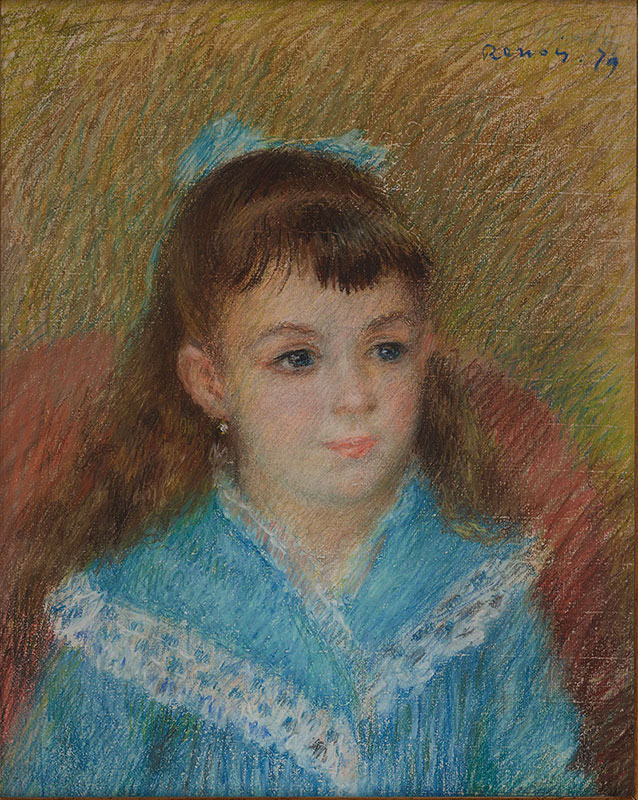Listen to director and curator Colin Bailey discuss Renoir’s portraits in pastel

Elisabeth Maître (1873–1960) was the niece of Edmond Maître, a writer, musician, collector, and friend of several Impressionist artists. Her uncle took her at age six to sit for Renoir, and many years later she recalled fond memories of the day. This pastel is typical of the commissioned portraits Renoir made regularly in the 1870s, works that helped to secure his artistic reputation. He was particularly adept at using the shimmering quality of pastel to give a bright, lively appearance to his sitters, who were often the wives or children of his patrons.
Portrait of a Girl (Elisabeth Maître), 1879
Pastel
The Albertina Museum, Vienna, The Batliner Collection; DL535
In the late 1870s, Renoir devoted considerable effort to painting and drawing portraits, which became an important means of support as well as a way to establish his reputation with collectors. Many critics appreciated his skill in the medium of pastel, which he often used to depict the wives and children of his patrons. When he exhibited two such works in the annual Paris Salon of 1879, one writer commented that “M. Renoir heads the field when it comes to pastel. Impossible to imagine anything more pleasing than the two portraits of children he is showing.” This pastel, made the same year, depicts six-year-old Elisabeth Maître, the niece of the writer and art collector Edmond Maître, who was a friend of Renoir and many of the artists in his circle. Years later, in response to a query from an art historian who would go on to compile a catalogue of Renoir’s work, Maître wrote about her memories of her uncle taking her to the Louvre and to Renoir’s studio, where the artist drew this portrait of her in just three sittings. Elisabeth Maître de Cardenal later became an artist herself, showing landscapes, portraits, and nudes in Paris and elsewhere in Europe in the 1930s and 40s.
